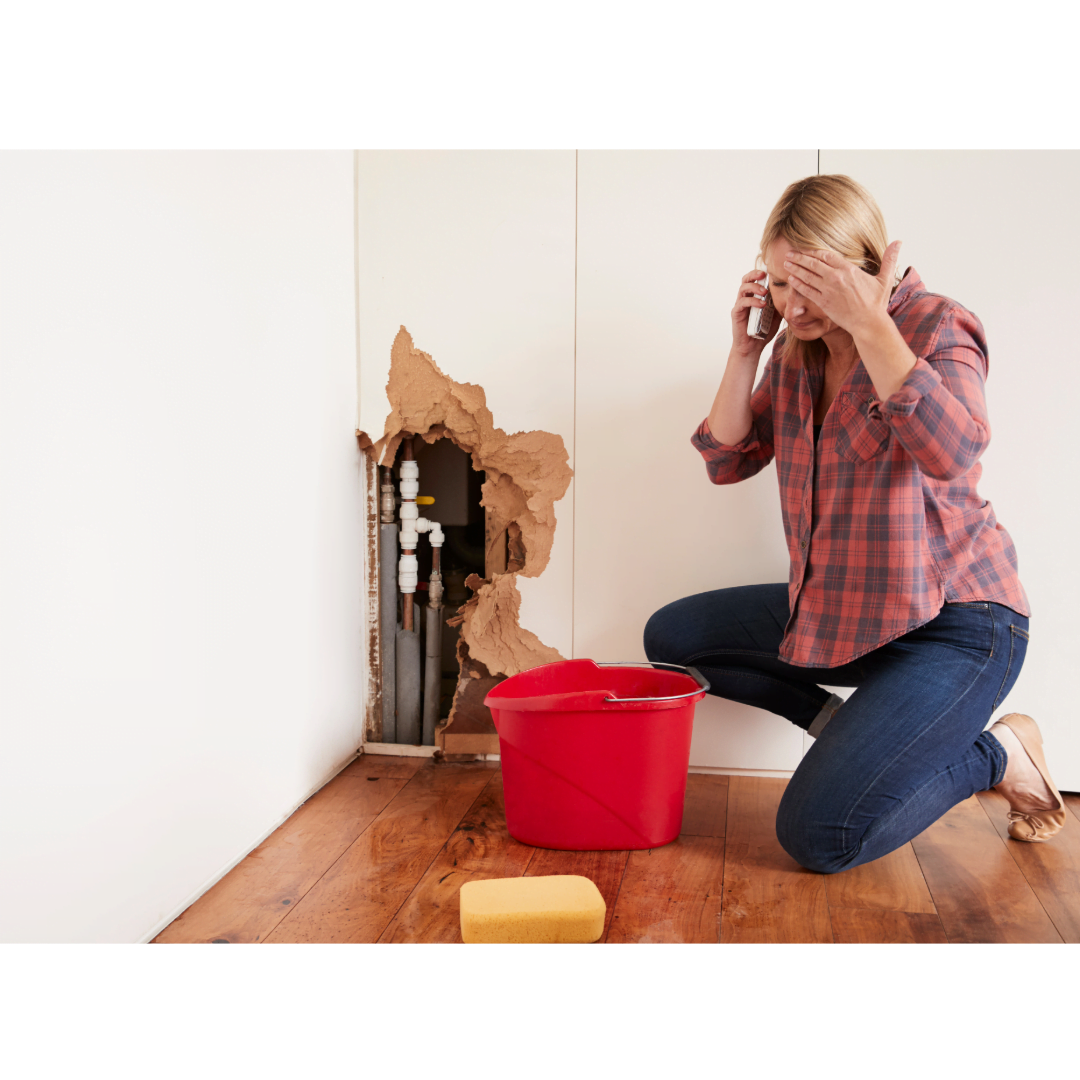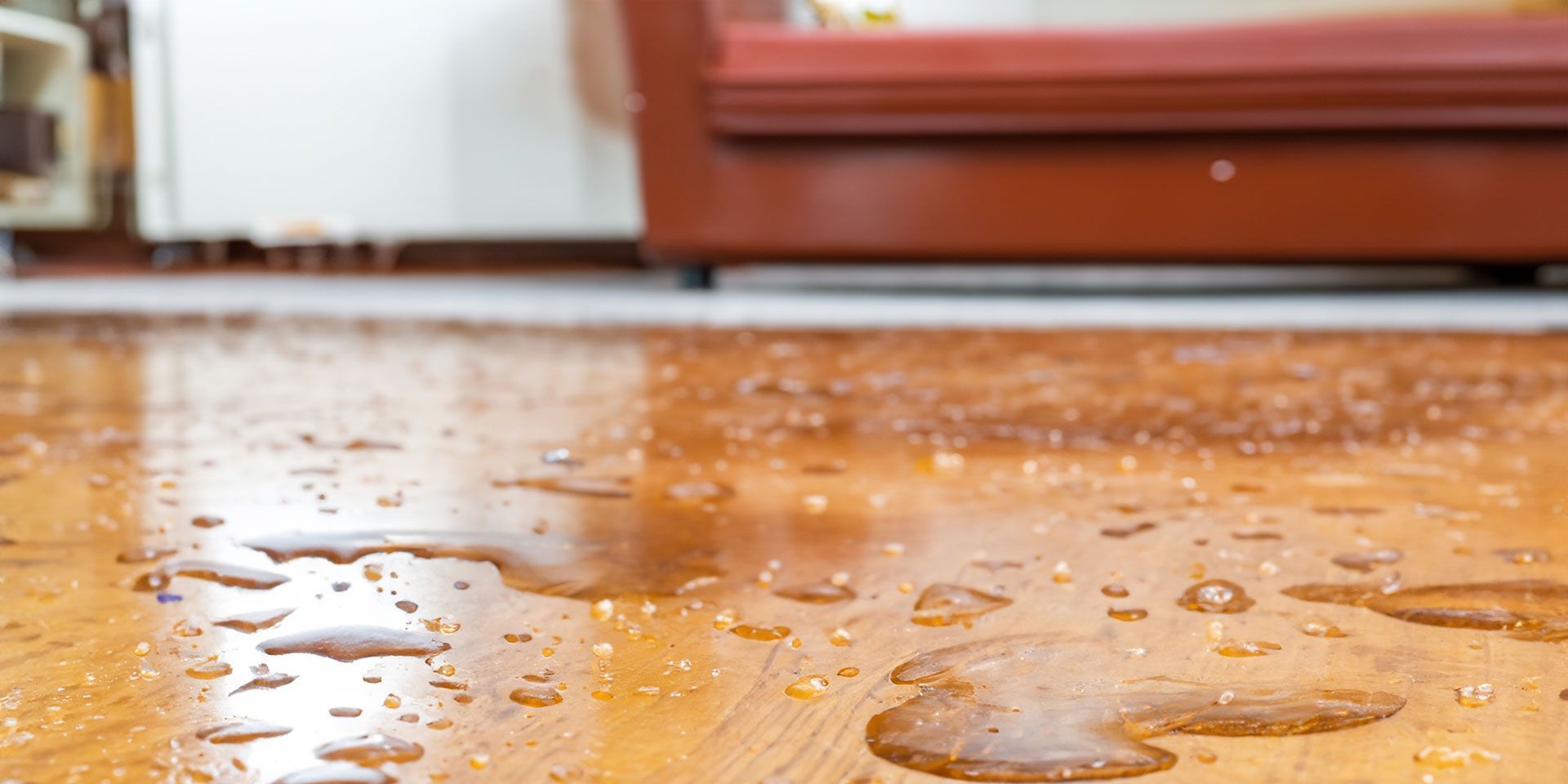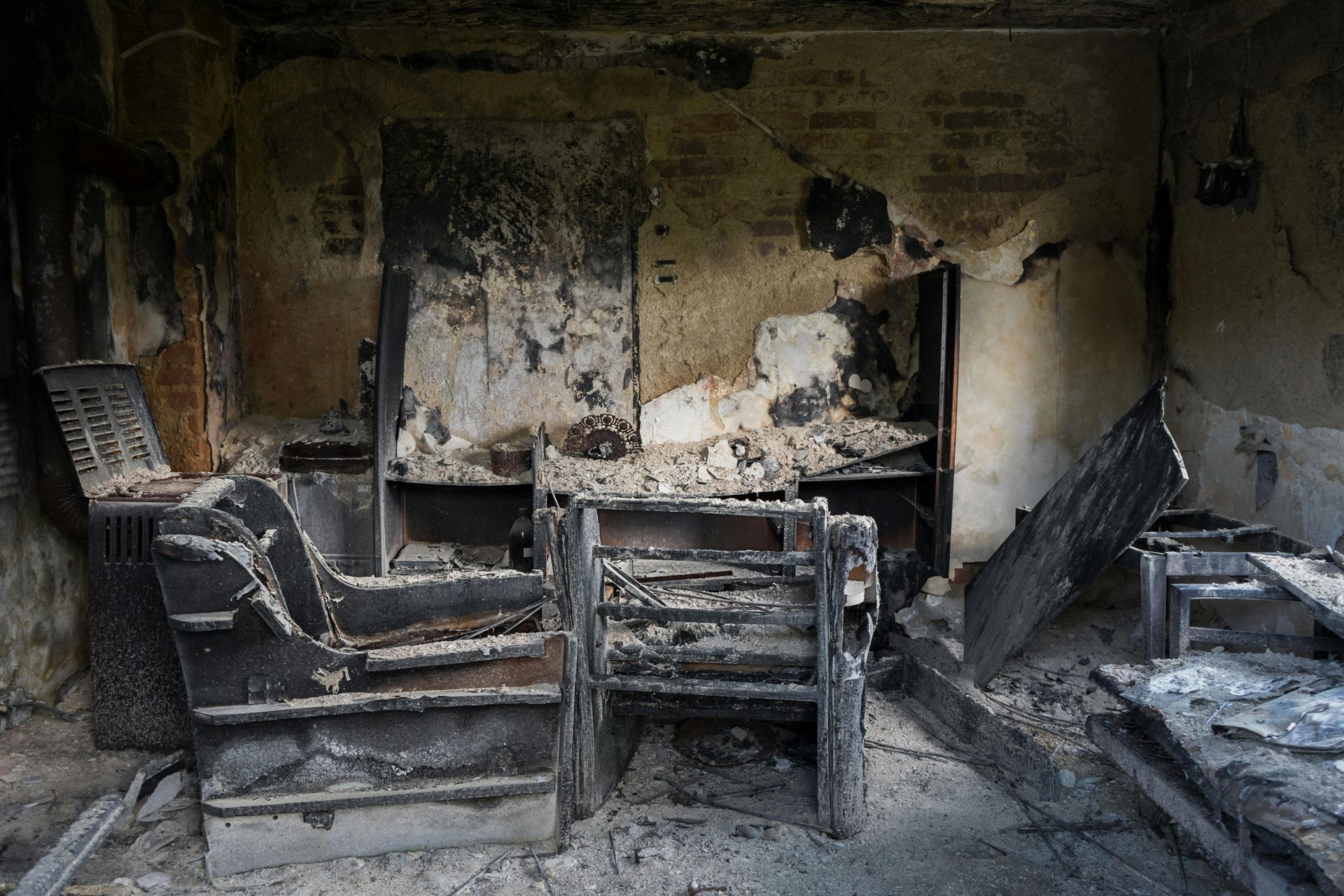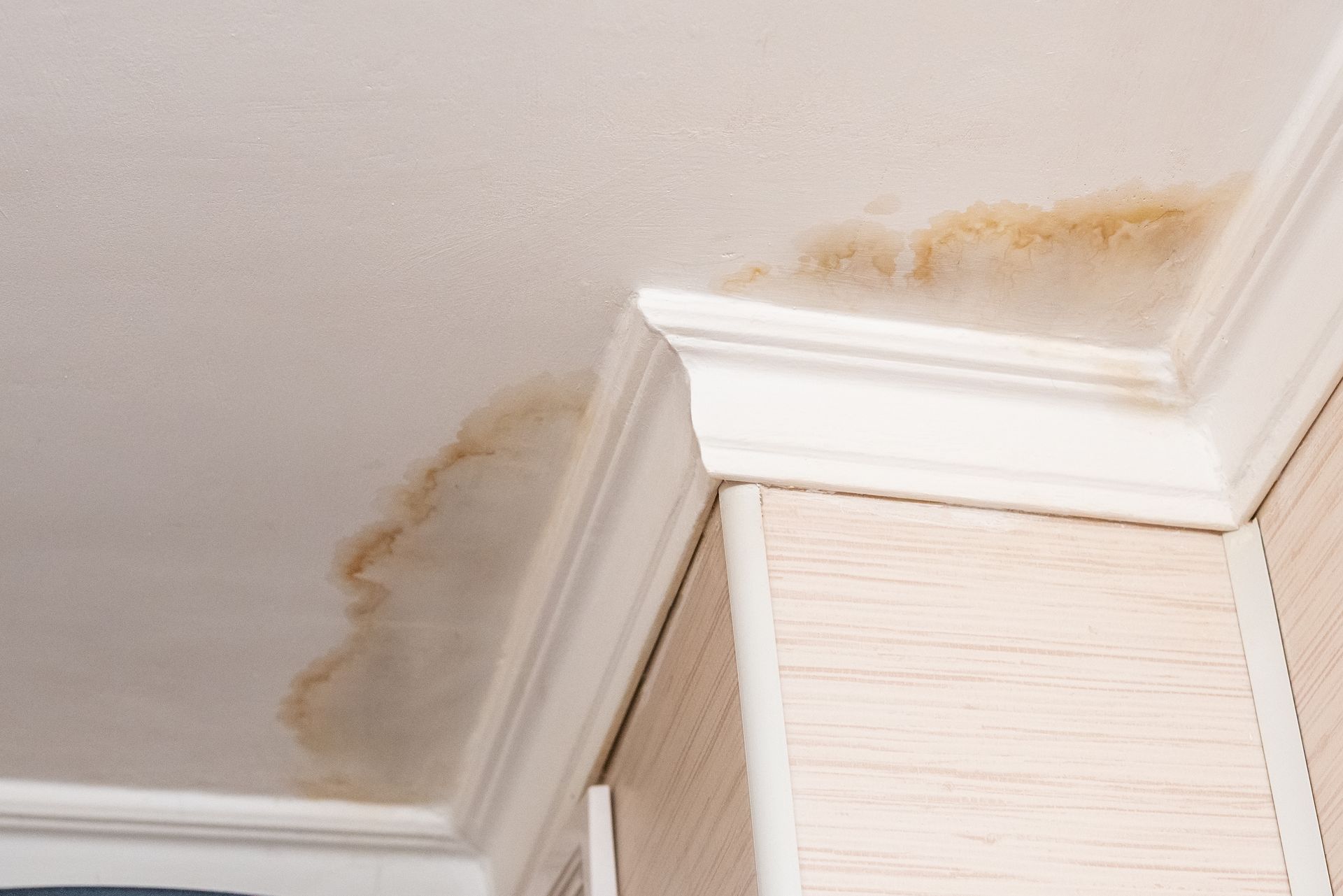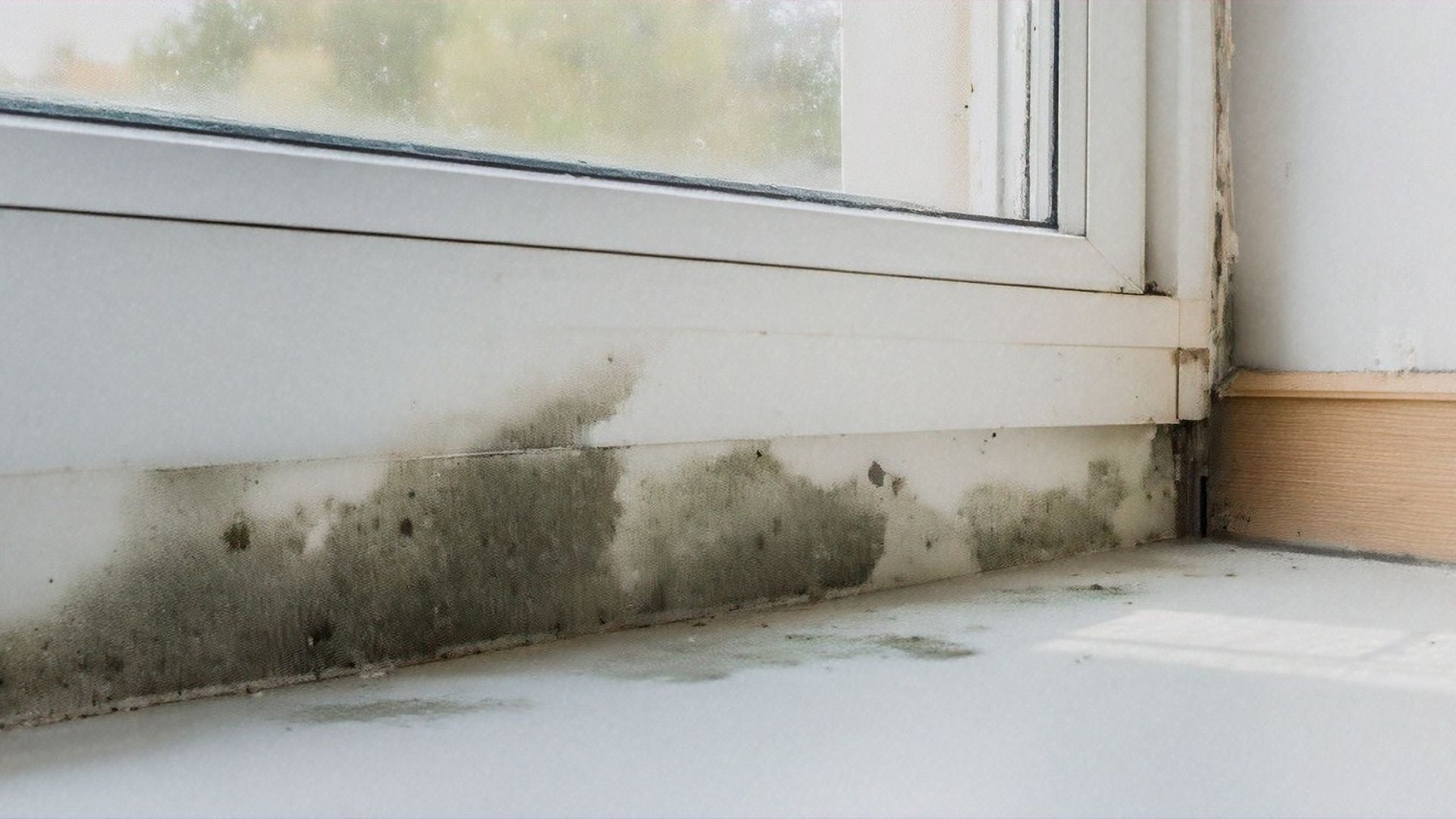Navigating Home Insurance: Understanding Coverage for Water Damage and Mold
Aurian Garrett • March 28, 2024

House fires rank among the most devastating events homeowners face. After firefighters extinguish the flames and emergency responders clear the scene, many homeowners in Evansville believe the worst damage has passed. However, the actions taken immediately following a fire determine whether restoration costs remain manageable or escalate into financial catastrophe. Understanding why prompt fire damage cleanup is essential helps protect your property, finances, and family health during this critical recovery period. Fire Damage Continues After Flames End The visible fire damage represents only part of the destruction affecting your home. After flame suppression, the combination of soot, smoke residue, firefighting water, and heat damage creates an actively deteriorating environment. This toxic mixture continues breaking down building materials, destroying electronics, and embedding odors deep into walls, insulation, and household fabrics. The Escalating Costs of Delayed Response Progressive Structural Deterioration Smoke and soot contain acidic compounds that actively break down building materials over time. Drywall becomes increasingly brittle, wooden structures warp or develop rot, and metal fixtures begin corroding. Areas never touched by flames can suffer extensive long-term damage when cleanup delays allow these acids to continue their destructive work. Water Damage from Firefighting Operations House fire suppression typically requires thousands of gallons of water, which saturates floors, walls, ceilings, and furnishings. This moisture does not simply evaporate. Without prompt extraction and drying, trapped water creates ideal conditions for mold growth while further weakening structural components already compromised by fire damage. Mold Growth in Humid Conditions Evansville's climate creates particular vulnerability to mold development following fire damage. Mold spores can establish colonies within 24 to 48 hours after water exposure, adding expensive remediation requirements to the restoration process. Mold contamination also poses serious health risks for individuals with allergies, asthma, or respiratory sensitivities. Permanent Smoke Odor Penetration Smoke odors quickly penetrate building materials throughout the home. Extended exposure allows odor molecules to embed deeply into carpets, upholstery, and HVAC systems. The longer smoke residue remains untreated, the more difficult and expensive complete odor removal becomes, often requiring specialized professional equipment and treatments. Insurance Coverage Complications Delayed fire damage cleanup can create significant insurance claim complications. Insurance providers may deny or reduce coverage if delays are interpreted as neglect or if the delay worsens the overall damage. Working with professional fire restoration companies in Evansville ensures proper documentation and procedures that protect your insurance claim. Professional Fire Damage Restoration Process Effective fire restoration requires systematic, multi-step procedures using specialized equipment and expertise to return properties to safe, livable conditions. Emergency Response and Property Security Restoration 1 of Evansville provides 24/7 emergency fire damage response throughout Southern Indiana. Their team arrives quickly to secure the property, install board-up protection where needed, and conduct comprehensive damage assessment. Water Extraction and Structural Drying Property drying takes priority before other restoration work begins. Commercial-grade air movers and dehumidifiers remove moisture from building structures, preventing additional water damage and mold development. Smoke and Soot Removal Certified technicians clean all surfaces, furniture, and materials affected by smoke and soot contamination. Specialized cleaning agents prevent further corrosion and staining while removing toxic residues. Odor Elimination and Air Purification Advanced deodorization techniques including ozone treatments and air scrubbing systems eliminate lingering smoke odors from every area of the property, ensuring complete air quality restoration. Repair and Reconstruction Following cleanup completion, restoration begins on damaged areas. This comprehensive phase may include replacing drywall, repainting, installing new flooring, and ensuring all work meets current safety standards. Benefits of Local Evansville Fire Restoration Choosing local fire restoration services provides distinct advantages during the recovery process. Restoration 1 of Evansville understands specific challenges facing Southern Indiana homes, including humidity-related mold risks and local insurance provider requirements. Their certified team manages the entire restoration process, allowing homeowners to focus on personal recovery. Key service advantages: 24/7 emergency response availability IICRC-certified restoration technicians Advanced restoration equipment and techniques Direct insurance company communication and coordination Complete fire, smoke, and water damage repair services Financial Impact of Delayed Fire Cleanup The cost differences between immediate and delayed fire damage response demonstrate the importance of prompt action: Immediate Professional Cleanup: $5,000 to $20,000 Rapid restoration with minimized long-term damage Preserved structural integrity Reduced secondary damage costs Delayed Cleanup (1-2 weeks): $15,000 to $40,000+ Required mold remediation services Extensive structural repairs Potential insurance premium increases No Cleanup or DIY Attempts: $40,000+ Complete property rebuild requirements Possible insurance claim denial Extended displacement costs While every fire situation differs, the pattern remains consistent: delayed response increases total restoration costs significantly. When Professional Intervention Becomes Necessary Professional fire damage restoration should begin immediately following any fire incident. Even minor kitchen fires or isolated electrical issues can leave behind toxic smoke residues and hidden water damage. Properties with smoke odors, dampness, visible soot, or water staining require expert assessment and treatment. Restoration 1 of Evansville provides thorough damage inspections and develops clear action plans for every situation, ensuring appropriate response regardless of fire size or scope. Protecting Your Property Through Immediate Action The time between fire suppression and professional restoration directly impacts total damage severity and restoration costs. Fast, professional fire restoration preserves your home's structural integrity, reduces long-term expenses, and protects your family's health during recovery. Restoration 1 of Evansville maintains 24/7 emergency response capability for fire damage situations throughout Southern Indiana. Their comprehensive services include property securing, complete cleanup, full repair work, and insurance coordination throughout the restoration process. Contact Restoration 1 of Evansville immediately at (812) 909-6424 or visit restoration1evansville.com for emergency fire damage restoration services. Taking immediate action after fire damage protects both your property investment and your family's wellbeing, preventing manageable restoration projects from becoming complete reconstruction requirements.
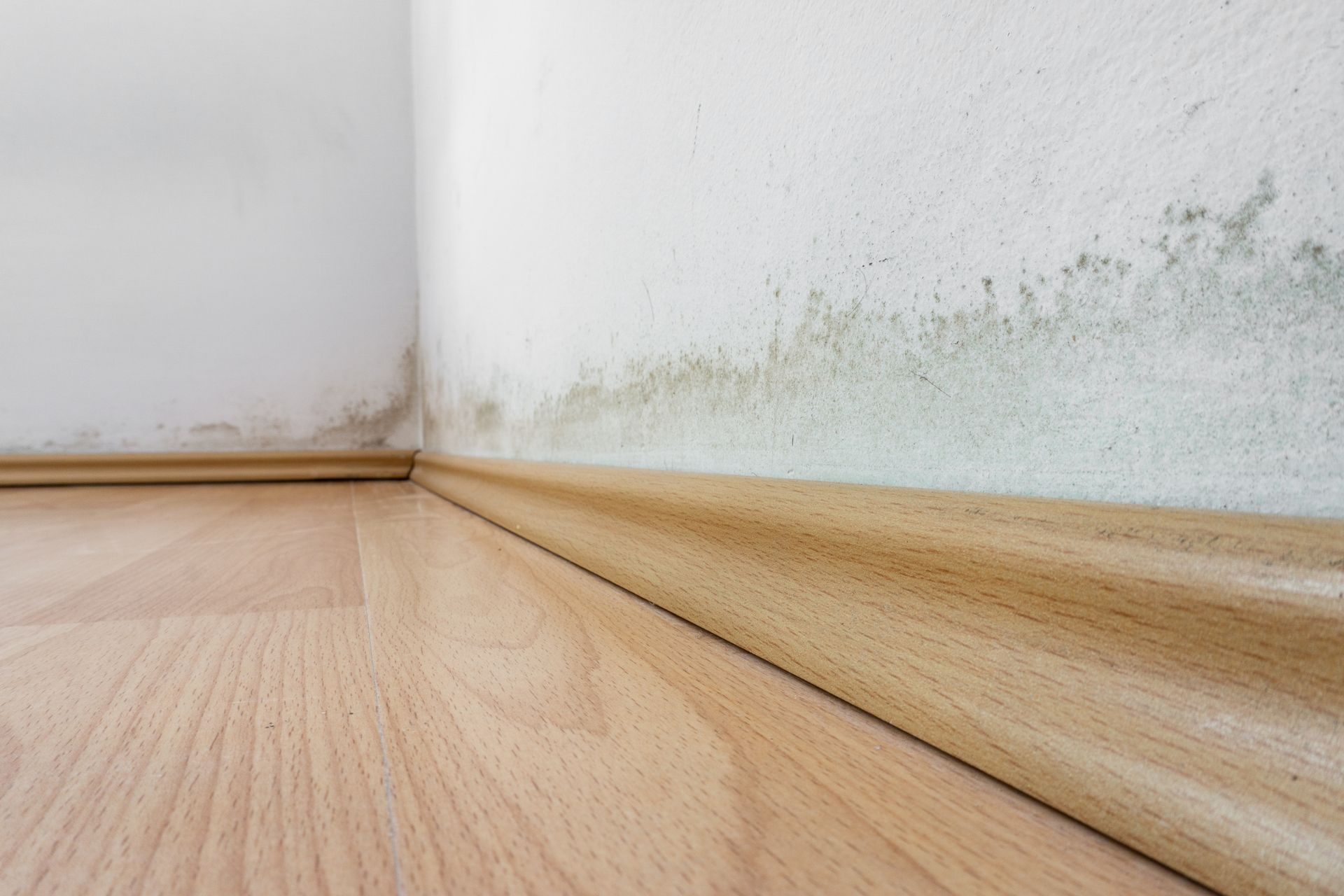
Mold problems in Southern Indiana homes often develop silently, staying hidden until they become serious health hazards and costly property issues. Many homeowners in the Evansville area recognize mold as a household concern, yet few understand how significantly it can impact both family health and home value when left untreated. Understanding mold's effects on your property and wellbeing helps protect your investment and keeps your family safe. Whether you own a home, manage rental properties, or operate a business in the Evansville region, recognizing mold risks and taking prompt action prevents minor issues from becoming major problems. Understanding Mold Growth Conditions Mold colonies thrive in environments with three key elements: moisture, darkness, and poor ventilation. In Southern Indiana homes, basements, crawl spaces, bathrooms, and attics create ideal conditions for mold development. Water leaks, elevated humidity levels, inadequate ventilation, and flood damage all contribute to mold-friendly environments. Once mold spores contact moist surfaces, rapid growth begins. Mold colonies can establish and start spreading within 24 to 48 hours under optimal conditions, making early detection and quick response critical for preventing widespread contamination. Health Consequences of Mold Exposure Respiratory System Impact Prolonged inhalation of mold spores triggers various respiratory symptoms including persistent coughing, frequent sneezing, throat irritation, and breathing difficulties. Individuals with existing asthma, allergies, or chronic respiratory conditions face particular risks, as mold exposure can intensify symptoms and increase flare-up frequency. Allergic Response Development Mold exposure commonly causes itchy eyes, runny nose, skin rashes, and sinus congestion. Even people without previous allergy histories can develop mold sensitivities following extended exposure periods. Black Mold Health Concerns Stachybotrys chartarum, commonly called black mold, produces mycotoxins that may cause more severe health effects than typical household molds. While black mold occurs less frequently than other varieties, its presence requires immediate professional attention and specialized removal procedures. Increased Vulnerability for Certain Groups Young children, elderly individuals, and people with compromised immune systems experience heightened susceptibility to mold-related health effects. For Southern Indiana families, professional mold remediation represents essential health protection rather than simple property maintenance. Property Value Impacts from Mold Contamination Mold issues can significantly reduce property values and create obstacles for homeowners planning to sell or refinance their properties. Home Inspection Failures Real estate transactions typically include professional home inspections, and mold discovery often raises immediate red flags. Visible mold growth or evidence of past water damage can delay sales, prompt renegotiation of purchase prices, or cause deals to collapse entirely. Progressive Structural Deterioration Mold growth extends beyond surface-level problems. Over time, active mold colonies can damage drywall, ceiling materials, wooden structural elements, and insulation systems. This progressive deterioration requires expensive repairs and reduces overall property value. Insurance Coverage Complications Insurance providers may deny mold-related damage claims if they determine the contamination resulted from maintenance neglect. Such denials can create substantial out-of-pocket expenses, particularly when mold has caused extensive structural damage. Market Confidence Issues Even after completing professional remediation, documented mold problems can create buyer hesitation during future sales. Certified documentation from qualified mold remediation specialists like Restoration 1 of Evansville helps restore buyer confidence and supports property value recovery. Recognizing Hidden Mold Problems Mold contamination often develops in concealed areas before becoming visible. Watch for these warning signs that may indicate hidden mold growth: Persistent musty odors in specific rooms or areas Warped, discolored, or bulging drywall surfaces Peeling paint or wallpaper without obvious causes Ongoing allergies or respiratory symptoms that improve when away from home Water stains on ceilings, walls, or floors History of flooding, leaks, or moisture problems Professional mold inspection becomes advisable when any of these indicators appear, preventing minor contamination from spreading throughout the property. Risks of DIY Mold Removal Attempts Numerous online guides and retail products claim to eliminate mold problems, but these approaches typically address only surface growth while ignoring underlying causes. Effective mold remediation requires identifying moisture sources, containing affected areas, safely removing contaminated materials, and ensuring complete drying to prevent recurrence. Improper removal attempts can create additional problems by: Dispersing mold spores to previously unaffected areas Leaving hidden colonies that continue growing Exposing household members to concentrated airborne mold during removal Failing to address moisture problems that enabled initial growth Professional mold remediation provides permanent solutions, particularly important in Southern Indiana's humid climate conditions. Professional Mold Remediation Services in Evansville Restoration 1 of Evansville delivers comprehensive mold remediation services throughout Southern Indiana using IICRC-certified technicians and industry-standard procedures. Their systematic approach includes: Complete assessment and damage identification to determine the full scope of contamination Containment and isolation of affected areas to prevent cross-contamination Safe removal of contaminated building materials following established safety protocols Surface sanitization and treatment to eliminate remaining mold traces Air scrubbing systems to remove airborne spores from the environment Thorough drying and dehumidification to prevent future mold development The team also helps homeowners identify and address underlying causes such as ventilation problems, gutter issues, or plumbing leaks, ensuring mold problems do not return after remediation completion. Protecting Health and Property Value Mold problems require prompt professional intervention, as contamination worsens over time and becomes increasingly expensive to resolve. Whether you have discovered active mold growth, are involved in property transactions, or want assessment following water damage, Restoration 1 of Evansville provides reliable solutions. Their local team offers 24/7 availability for mold inspection and remediation services throughout the region. The company works directly with insurance providers and ensures property owners receive clear documentation of all remediation work performed. Contact Restoration 1 of Evansville at (812) 909-6424 or visit restoration1evansville.com to schedule your mold assessment today. Taking action at the first signs of mold protects both your family's health and your property investment, preventing minor issues from developing into major restoration projects.
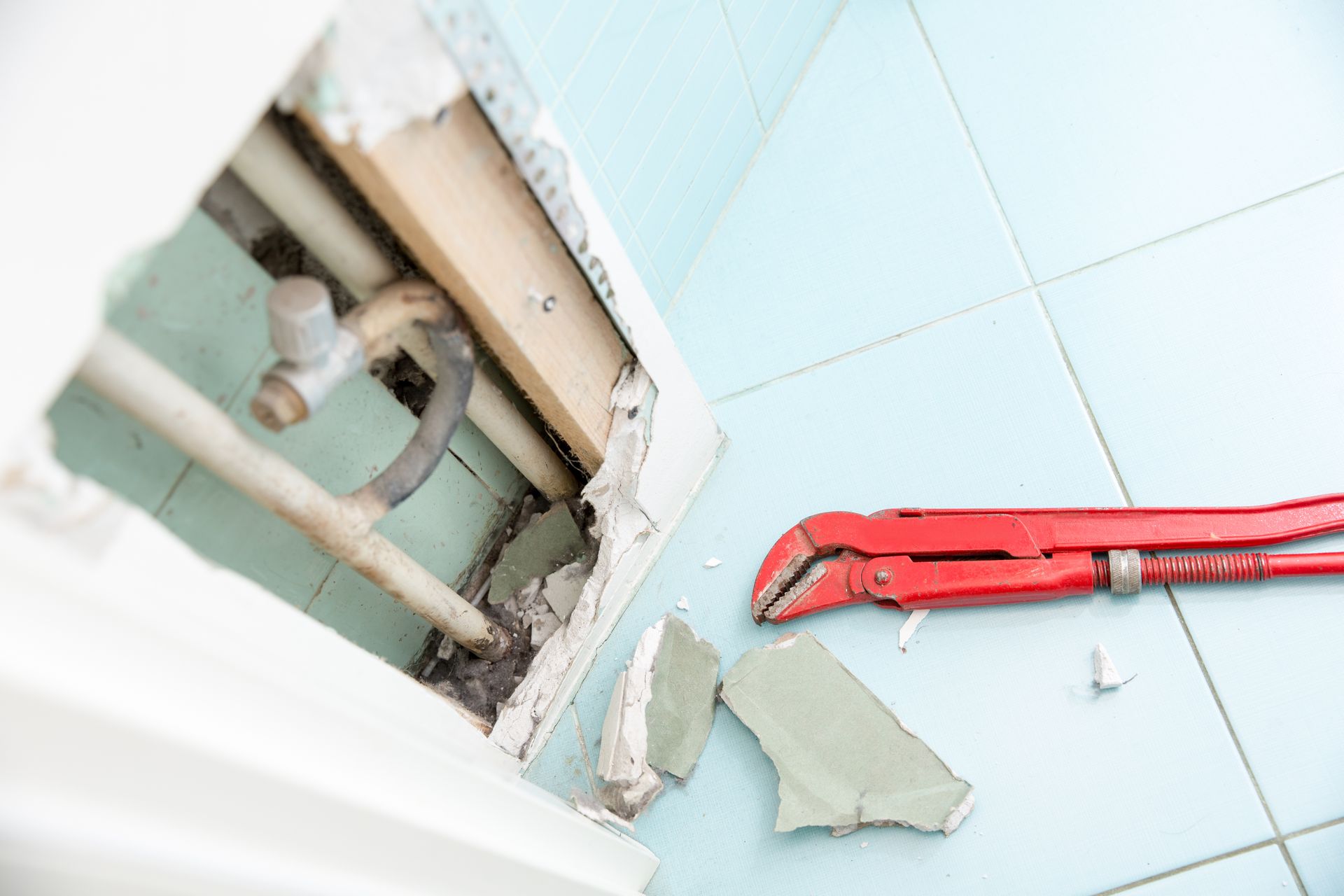
Hidden water damage costs Evansville homeowners thousands of dollars annually in unexpected repairs. While obvious issues like burst pipes grab immediate attention, the most expensive water damage often develops slowly from sources you might never suspect. Understanding these hidden threats can protect your Southern Indiana home from costly restoration work and dangerous mold growth. 1. Foundation Problems from Poor Yard Drainage The slope of your yard determines whether rainwater flows away from your home or pools against your foundation. When landscaping directs water toward your house instead of away from it, moisture gradually penetrates basement walls and creates ideal conditions for mold growth. Warning signs of drainage problems: Standing water near your foundation after rainfall Basement corner dampness or musty odors Soil erosion patterns along exterior walls Efflorescence (white mineral deposits) on basement walls Professional solution: Restoration 1 of Evansville provides comprehensive basement water damage restoration that addresses both immediate moisture issues and underlying drainage problems. Their team can assess whether you need yard regrading, French drain installation, or foundation waterproofing. 2. Gutter System Failures Clogged or improperly installed gutters transform your roof's water management system into a foundation flooding risk. When gutters overflow, water cascades directly onto soil around your home's perimeter. Over time, this concentrated water flow can saturate foundation walls and seep into basements. Evansville's climate patterns make gutter maintenance particularly critical. The region experiences heavy spring rains followed by intense summer storms, putting continuous stress on drainage systems throughout the growing season. Key maintenance checkpoints: Gutter cleaning twice yearly (spring and fall) Downspout extensions that direct water at least six feet from the foundation Proper gutter slope to ensure water flows toward downspouts Secure gutter attachment to prevent sagging When damage occurs: Restoration 1's water damage specialists use advanced moisture detection equipment to identify hidden water infiltration behind walls and under flooring before visible damage appears. 3. HVAC System Moisture Issues Air conditioning systems generate significant condensation during Evansville's humid summers. When condensate drain lines become clogged or disconnected, moisture backs up into your home's structure. Similarly, leaky ductwork in basements or crawl spaces can create persistent humidity that damages insulation and wooden framing. Common HVAC water damage indicators: Water pooling around indoor air handler units Musty odors near air vents or returns Ceiling stains below ductwork Increased humidity levels in specific rooms Prevention strategy: Schedule annual HVAC maintenance that includes condensate drain cleaning and ductwork inspection. Many Evansville homes built before 1990 have ductwork that lacks proper vapor barriers, making them particularly susceptible to condensation problems. 4. Slow Roof Leaks in Critical Areas The most destructive roof leaks develop gradually in roof valleys, around chimneys, and near plumbing vents where flashing creates potential failure points. These slow leaks can persist for months before homeowners notice interior damage, allowing water to saturate insulation and compromise structural elements. Early detection signs: Ceiling discoloration that appears and disappears Unexplained increases in heating or cooling costs Paint or wallpaper peeling in upper floor rooms Attic odors that suggest moisture accumulation Evansville-specific considerations: The region's freeze-thaw cycles can accelerate roof deterioration, particularly around flashing and in valleys where ice dams form. Annual roof inspections help identify vulnerable areas before they develop into major water intrusion points. 5. Appliance Water Line Failures Hidden appliance leaks cause extensive damage because they typically occur in areas homeowners rarely inspect closely. Water heaters, washing machines, and dishwashers all contain multiple connection points where slow leaks can develop unnoticed. High-risk appliance locations: Water heater drain pans and supply connections Washing machine hoses and valve connections Dishwasher door seals and drain lines Refrigerator ice maker supply lines Local factors: Evansville's hard water accelerates mineral buildup in appliance water lines, increasing the likelihood of connection failures and reducing hose lifespan. Homes with older plumbing systems face additional risks from galvanized pipe corrosion. Preventive maintenance: Replace appliance hoses every five years and inspect connections annually. Install water leak detectors near high-risk appliances to provide early warning of developing problems. The Hidden Cost of Delayed Action Hidden water damage creates compounding problems that extend far beyond the initial moisture source. Even minor leaks can trigger expensive secondary issues including structural deterioration, toxic mold growth, and decreased property values. Insurance companies may also deny claims when they determine that homeowner negligence contributed to damage progression. Immediate response benefits: Prevents mold growth that begins within 24-48 hours Maintains structural integrity by limiting wood rot Preserves indoor air quality and family health Protects property values and insurance coverage Professional Water Damage Response in Evansville When hidden water damage strikes your home, rapid professional intervention makes the difference between minor repairs and major reconstruction. Restoration 1 of Evansville provides 24/7 emergency water damage response throughout Southern Indiana, including Evansville, Henderson, Jasper, and surrounding communities. Their comprehensive restoration process includes advanced moisture detection, complete water extraction, structural drying, and mold prevention treatments. The team works directly with insurance companies to streamline claims processing while ensuring thorough restoration that prevents future problems. Emergency contact: Call Restoration 1 of Evansville at (812) 909-6424 for immediate water damage response. Their certified technicians respond around the clock to minimize damage and begin the restoration process immediately. Understanding these hidden water damage sources empowers you to protect your Evansville home through proactive maintenance and early intervention. When prevention falls short, professional restoration services ensure your property returns to pre-damage condition quickly and completely.

Restoration 1 Proudly Supports Local Education Through Charity Golf Outing At Restoration 1, we believe in restoring more than just homes and businesses—we believe in restoring hope, opportunity, and strength in the communities we serve. That’s why we were honored to participate in last week’s charity golf outing in support of the EVSC Foundation, an organization committed to enhancing educational opportunities for students in our region. The event was more than a day on the green. It was a powerful reminder of what can be accomplished when local businesses and individuals come together to give back. With the help of generous participants, the outing successfully raised critical funds to support programs, scholarships, and resources for students and educators alike. We’d like to take a moment to say thank you: "On behalf of our entire team, thank you for participating in our charity golf outing last week. Your support and enthusiasm helped make the event a great success, and we are truly grateful for your involvement. Thanks to generous participants like you, we were able to raise valuable funds for the EVSC Foundation, making a real difference in our community. We hope you had a great time on the course and look forward to seeing you at future events!" Giving back is a cornerstone of our mission at Restoration 1. Whether it's supporting disaster recovery efforts, assisting families in need, or contributing to causes like education, we're committed to making a meaningful impact—on and off the job. We are proud to stand alongside the EVSC Foundation and all those who made this event possible. And yes, we had a great time on the course, too! Stay tuned for more ways Restoration 1 is making a difference in the community. Together, we can build stronger, more resilient neighborhoods—one act of service at a time.
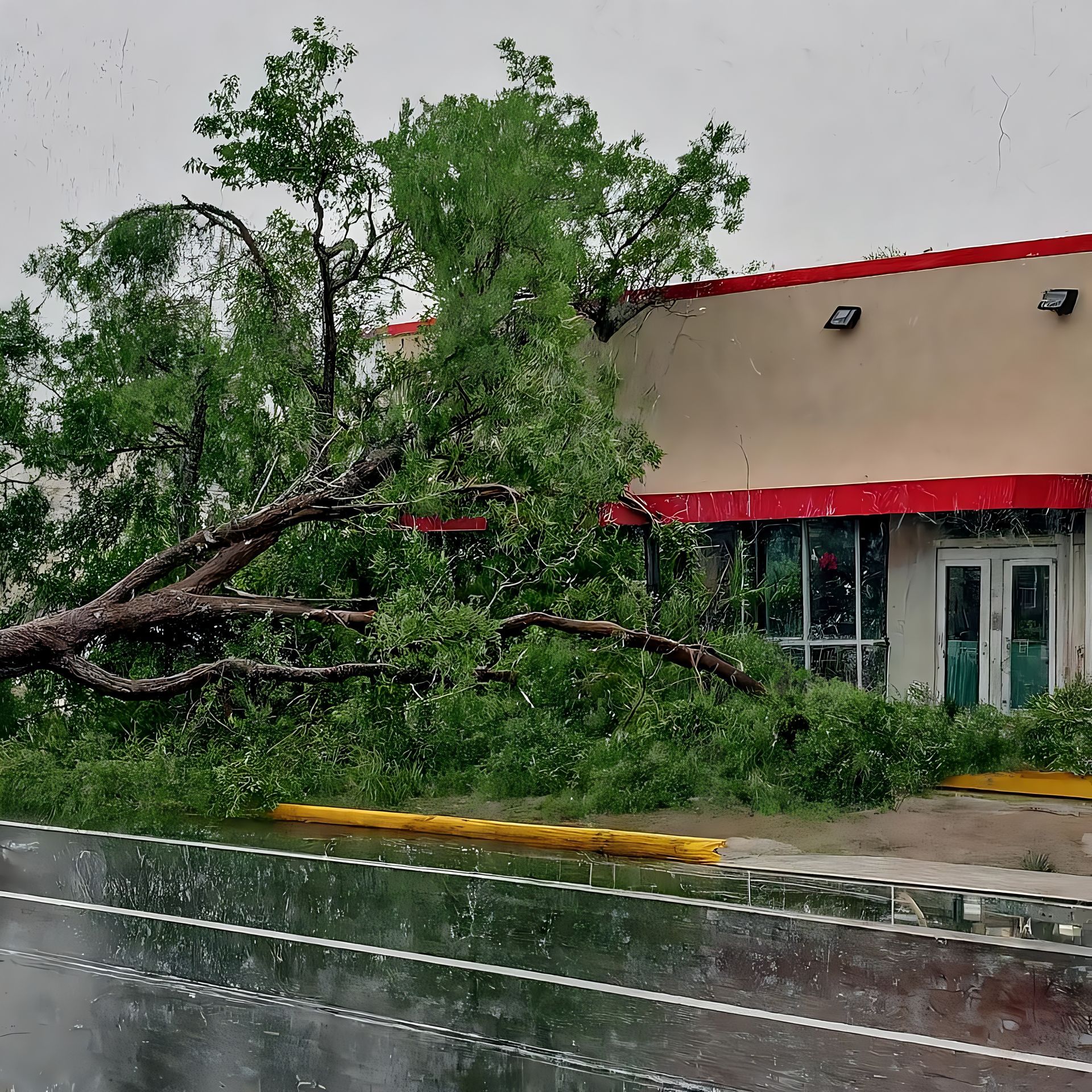
The First 24 Hours After Storm Damage If you're reading this, you've likely experienced storm damage to your home. Whether it's water stains on your ceiling, shingles scattered across your yard, or that unmistakable feeling that something's wrong with your property—you're not alone, and there's a clear path forward. As Restoration 1 of Evansville , we've guided our community through countless weather events. Southern Indiana storms arrive suddenly and leave lasting damage. This guide will walk you through immediate steps to take, explain why rapid response matters, and show how our local team can help minimize your stress during recovery. Recognizing Storm Damage: The Warning Signs Storm damage isn't always obvious immediately, which makes it particularly dangerous. What looks like a few missing shingles can quickly become major interior damage. Even small roof breaches allow water to penetrate your attic, saturate insulation, damage drywall, and trigger mold growth within 24 hours. Watch for these warning signs: Water spots appearing on ceilings or walls Missing, damaged, or curling shingles Fallen tree limbs on your roof or near power lines Standing water around your home's foundation Cracked or loose siding Unusual damp odors indoors Electrical issues (flickering lights, tripped breakers) Even if visible damage seems minor, professional inspection is crucial. Many homeowners discover serious problems days later when ceilings begin to sag or mold starts spreading. The Critical Timeline: Why Immediate Action Matters Storm damage worsens exponentially with time. What starts as a minor issue today can lead to major structural problems tomorrow. Every hour that passes allows water to penetrate deeper into your home, affecting more materials and creating ideal conditions for mold growth. Consider a small roof breach: Initially, it might allow just a trickle of water inside. But after continued rain or humidity, that water saturates structural wood and creates perfect conditions for mold growth. Once mold establishes, your HVAC system can circulate spores throughout your home. What began as a simple roof repair now involves comprehensive mold remediation and potentially air quality concerns for your family. This timeline explains why emergency services like roof tarping are essential—they're temporary solutions that prevent thousands in additional damage while protecting your family's health. Professional Roof Tarping: Emergency Protection Roof tarping provides immediate, temporary protection for storm-damaged roofs. Our heavy-duty, weather-resistant tarps secure damaged areas to prevent further water intrusion until permanent repairs can be made. While DIY tarping might seem like a quick fix, improper installation often causes more problems. Store-bought plastic lacks durability, and without proper anchoring, wind can dislodge it or create water pooling that adds structural strain. Our professional installation uses secure anchoring techniques and proper water diversion to ensure protection holds until permanent repairs are completed. Our Emergency Response Process When you call Restoration 1 after a storm, our first priority is understanding your situation. We recognize you're calling during a stressful time, possibly concerned about your home's safety and navigating insurance requirements. We'll ask about visible damage, time elapsed since the storm, and any interior symptoms like moisture, odors, or drafts. Then, we dispatch a response team to assess the situation professionally. Our immediate response includes: Emergency roof tarping for exposed areas Water extraction and structural drying if moisture has penetrated Moisture readings and mold prevention measures Comprehensive documentation to support insurance claims Development of a complete restoration plan from structural repairs to finishing touches Our goal extends beyond cleanup—we restore your sense of home and security. Navigating Insurance Claims: Expert Guidance Storm restoration typically involves insurance claims, adjusters, and documentation requirements. Our experience working with virtually every insurance provider allows us to streamline this process. We document damage comprehensively, prepare detailed reports, and communicate directly with adjusters when needed. Many homeowners hesitate to report minor damage due to confusion about coverage or claims processes. Remember: storm protection is exactly what homeowner's insurance is designed to provide, and addressing small issues prevents them from becoming major problems. Why Choose Restoration 1 of Evansville We're your neighbors—not a national call center or rotating franchise staff. Our local Evansville team understands Indiana's unique weather challenges, having restored homes after tornadoes, floods, ice storms, and severe wind events throughout our community. Our commitment includes: 24/7 emergency response Fully-equipped response vehicles Technicians certified in water mitigation, mold remediation, and structural drying Direct service without subcontractors Complete restoration from emergency response through final repairs Understanding Mold Risk After Water Exposure With any water intrusion, mold development isn't a possibility—it's an inevitability without proper intervention. Within 24-48 hours, spores begin colonizing damp materials like insulation, drywall, and wood framing, then spread rapidly. Our advanced moisture detection equipment identifies hidden dampness behind walls and under flooring. For existing mold, we implement containment protocols, remove affected materials, and treat spaces to prevent recurrence. Don't wait for visible mold—early detection saves both your property and potentially your health. Immediate Steps You Can Take If you've experienced storm damage: Document everything with photos before moving debris Place containers under active leaks to minimize spreading Avoid using electrical systems in affected areas Call our 24/7 emergency line: 812-205-6424 Your Storm Recovery Partner Weather may be unpredictable, but your recovery doesn't have to be. When you contact Restoration 1 of Evansville, you're partnering with experienced professionals who understand both the technical requirements of storm restoration and the emotional impact of property damage. Whether you need emergency roof tarping, water extraction, or concerns about developing mold, immediate action prevents escalating problems. Contact us anytime at 812-205-6424 or visit restoration1ofevansville.com for immediate assistance. Your safety is our priority—we're here 24/7 when storms strike.
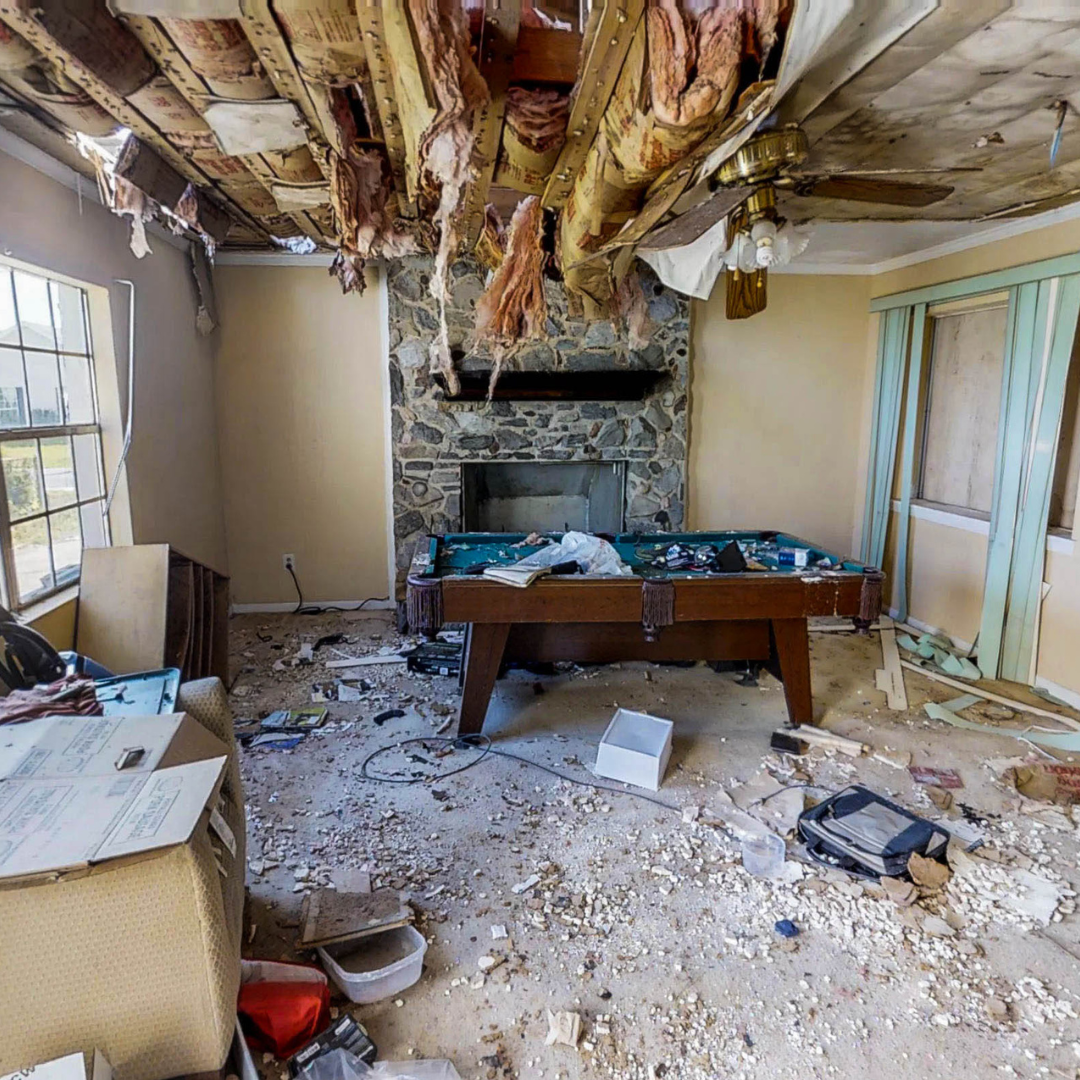
The Essential Guide to Professional Storm Damage Restoration: Why You Need Experts for Fast Recovery
The Essential Guide to Professional Storm Damage Restoration: Why You Need Experts for Fast Recovery

